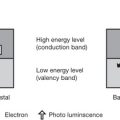19 Regulations
| The following are some of the regulations that apply to the UK, and other readers should check the local regulations for their own country. Only an outline of the main contents have been given, as the main texts are readily available on the internet | |
| Human Rights Act 1988 | Areas of note |
| Data Protection Act 1998 | Eight basic principles: Personal information must be: |
| Freedom of Information Act 2000 | Gives the power to individuals to: |
| Covers all NHS organisations who have to: | |
| Health and Safety at Work Act 1974 | The Act outlines the general duties that: |
| The Management of Health and Safety at Work Regulations 1999 | Requires employers to: |
| Health and Safety (Display Screen Equipment) Regulations 1992 | These regulations cover employees who use display screen equipment daily and for continuous spells of 1 hour or more at a time The key duties of employers are: |
The following are concerned with radiation
| The Medicines (Administration of Radioactive Substances) Regulations 1978 The Medicines (Administration of Radioactive Substances) Amendment Regulations 1995 |
Main areas |
|
• Prior authorisation to provide protection for the patients during the clinical use of radioactive substances
• Prior authorisation to provide protection for the volunteers during research in the use of radioactive substances
|
|
| The Radioactive Substances Act 1993 | Covers |
| The Ionising Radiations Regulations 1999 | Main areas General principles and procedures |
| Arrangements for the management of radiation protection | |
| Designated areas | |
| Classification and monitoring of persons | |
| Arrangements for the control of radioactive substances, articles and equipment | |
| Duties of employees | |
| The Radioactive Material (Road Transport) Regulations 2002 | Main areas |
| The Ionising Radiation (Medical Exposure) Regulations 2000 Amended 2006 |
Concerned with |
| Notes for the Guidance on the Clinical Administration of Radiopharmaceuticals and Use of Sealed Radioactive Sources 2006 | Main areas |
| The Appendices cover: | |
Legislative requirements for dealing with the use and disposal of photographic chemicals are dealt with under the following acts
| COSHH Regulations | Regulation 3 |
| Regulation 6 Assessment of health risks created by work involving substances hazardous to health |
|
| Regulation 7 Prevention or control of exposure to substances hazardous to health |
|
|
• With regard to inhalation of chemicals the occupational exposure standards (OESs) must not be exceeded
• Lists of OESs are published by the Health and Safety Executive in leaflet EH40 which is updated annually
|
|
| To reduce the quantity of fumes | |
| Regulation 8 Use of control measures |
|
| Regulation 9 Maintenance, examination and test of control measures |
|
|
• Non-disposable, personal protective equipment should be checked at ‘suitable intervals’ by examination and, where necessary, tests
|
|
| Regulation 10 Monitoring exposure at the workplace |
|
| Regulation 11 Health surveillance |
|
| Regulation 12 Information, instruction and training The employer must provide: |
|
| The Personal Protective Equipment (EC Directive) Regulations 1992 | Personal protective equipment is provided which is of an approved standard |
| Environmental Protection Act (1990) | ‘Integrated Pollution Control’ |
| ‘Duty of Care’ | |
| Water Act (1989) | |
| The Chemicals (Hazard Information and Packaging for Supply) Regulations 1994 (amended 1999) (CHIP) | These regulations cover such topics as: |
| The regulations are for manufacturers and suppliers | |
| The label provides information about the hazards and therefore the precautions which can be taken. These include: | |
| Pollution Prevention and Control Act 1999 Implementing the European Council Pollution Prevention Directive (96/61/EC) | Follows the principle that the polluter pays and encourages the prevention of pollution. It is concerned with pollution into the air, water and the soil and covers both old and new buildings. Its aim is to integrate all existing legislation |
| Annex IV mentions: | |
| European Packaging and Packaging Waste Directive 1994 (94/62/EC) |










